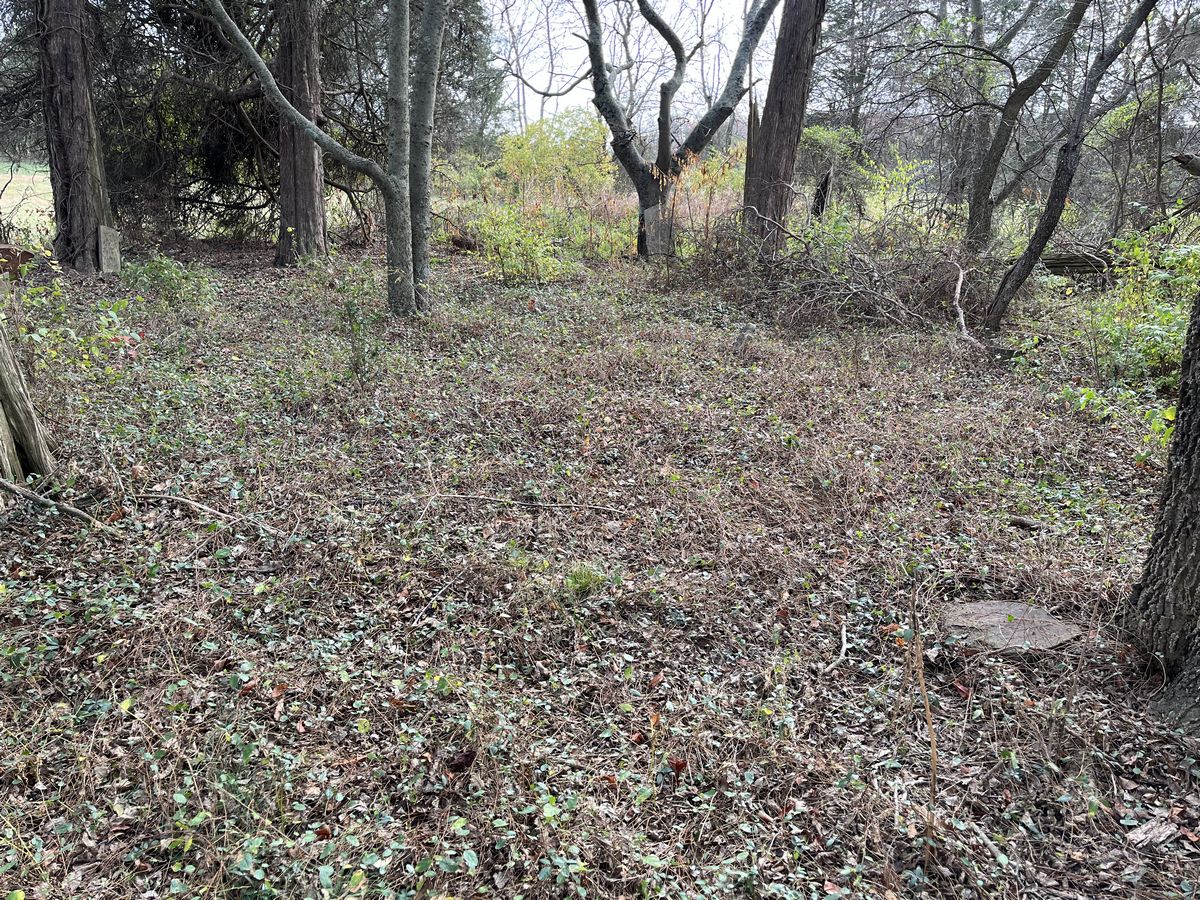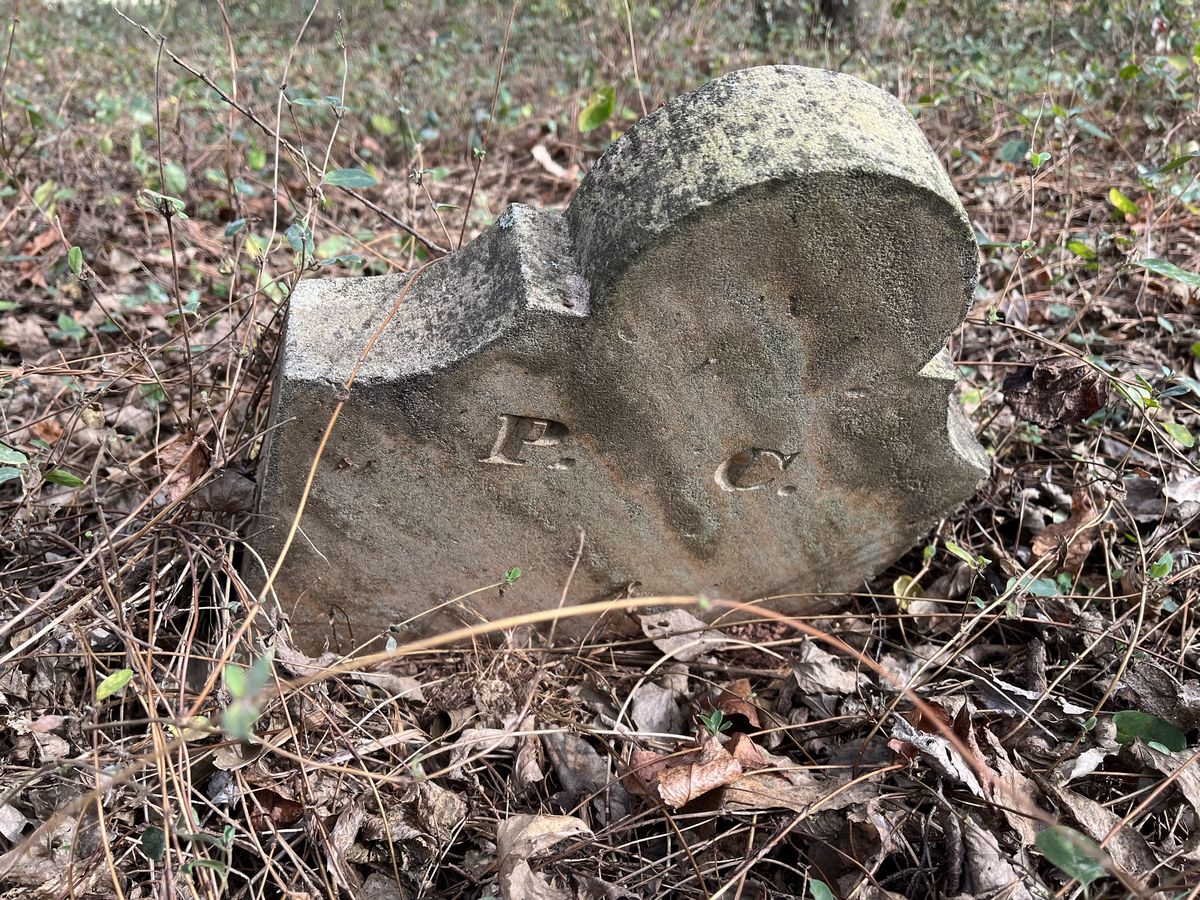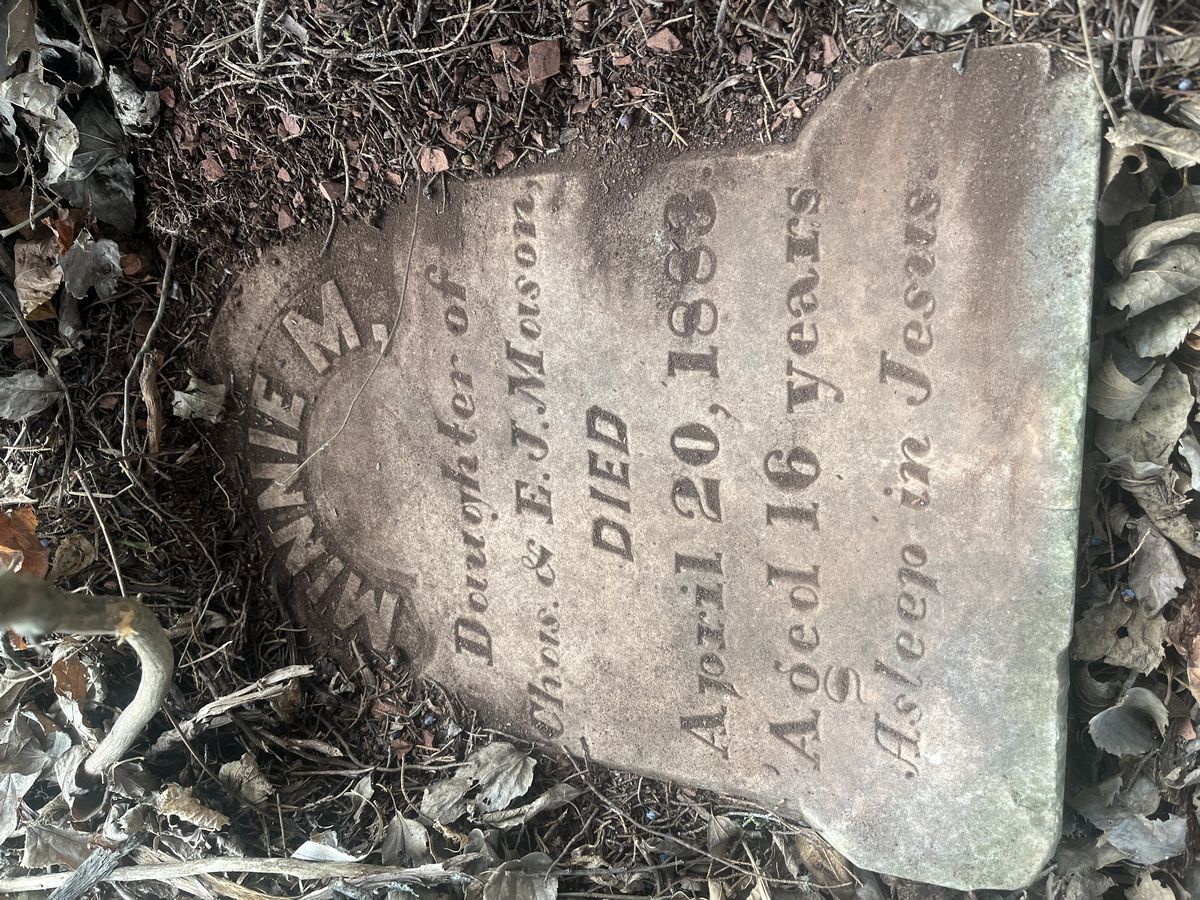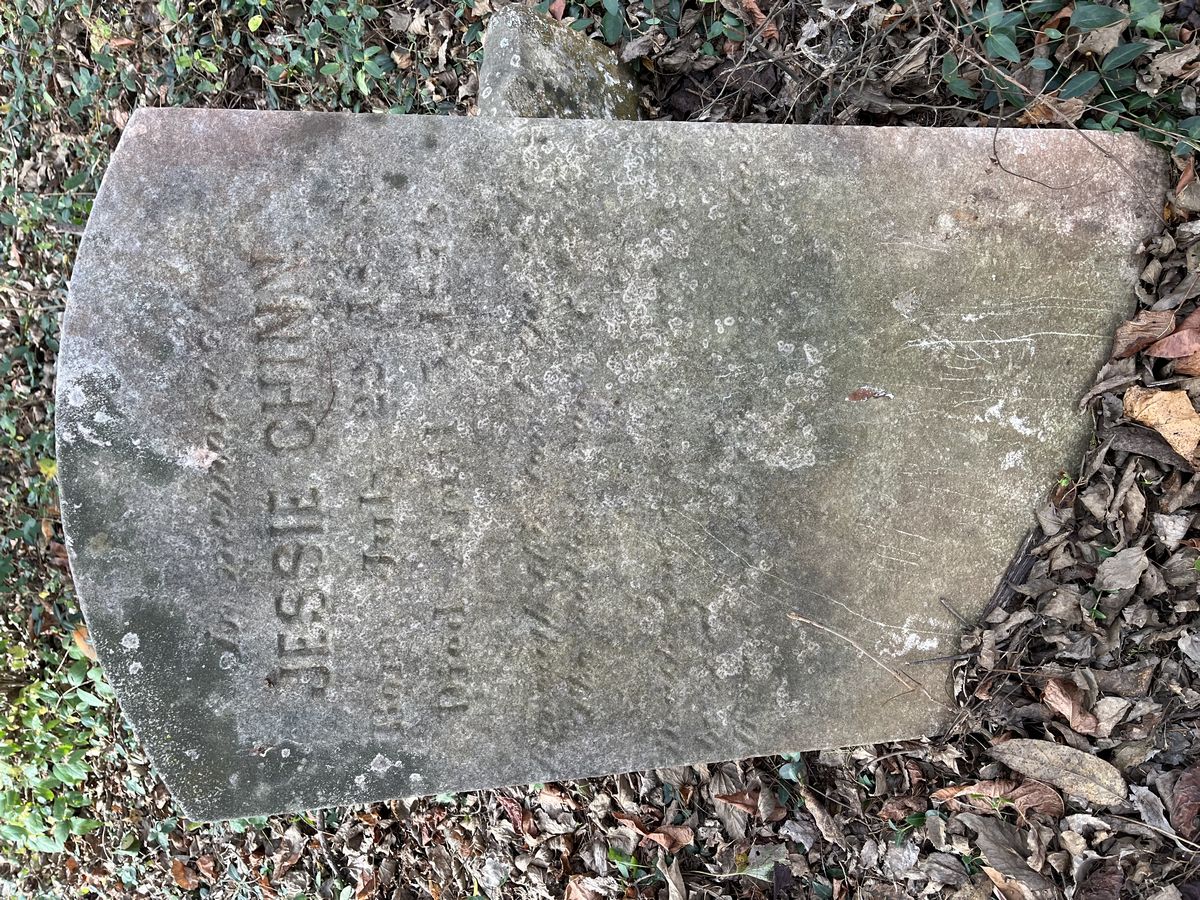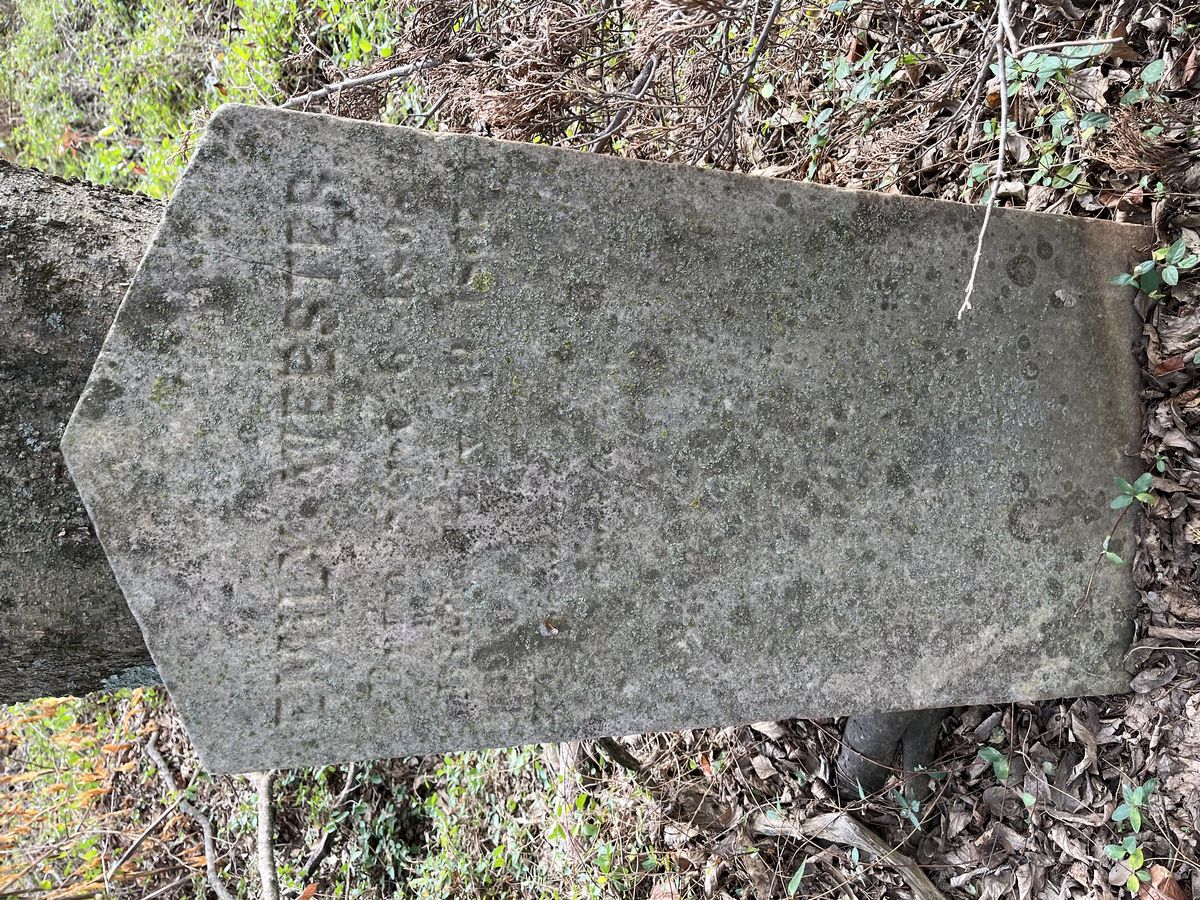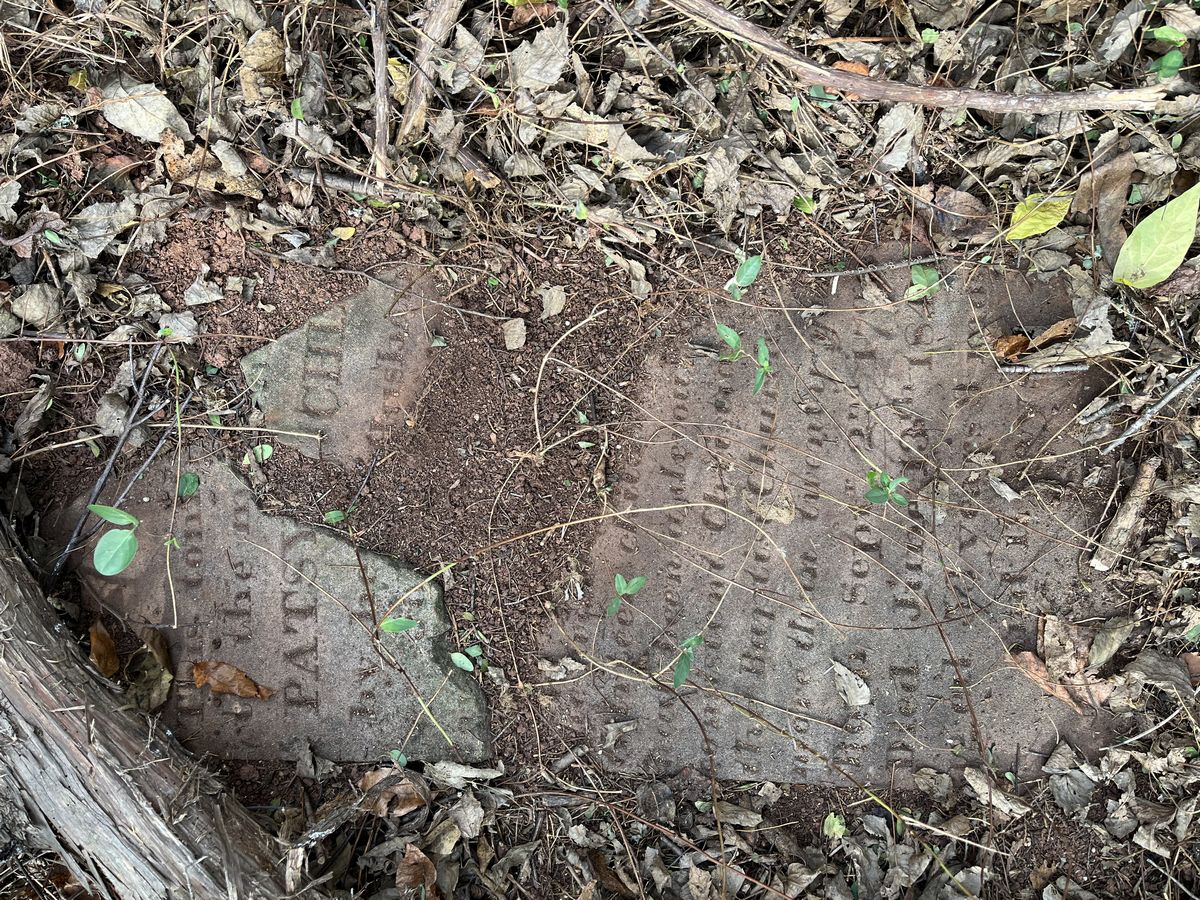
Chinn Fleetwood Cemetery
Narrative
Description of Fleetwood in Prince William, the Story of its Places and its People. A white house behind locust trees close to the road. From the brow of a hill it looks over the vestiges of a steep rose garden and Slaty Run at the foot, toward a wide view northward. A main section of plastered stone is length- ened by low frame wings. A formal porch once elaborated the façade. Below the eaves runs a rather delicate cornice. The building of Fleetwood was begun about 1823 on 438 acres of land bought about that time by John Gibson from Linah N. Fitzhugh. The acreage was a part of the Brent share of the large Brent Town Tract. George Brent's quarter of the 30,000 acres passed successively to his four sons and then to a grandson--another George Brent-_and next to William Brent (- -1782) of Richland in Stafford County, a great-great-grandson of the first Giles Brent, who was an uncle of George Brent of Woodstock. William Brent's sons, Richard Brent (- -1814) and Daniel Carroll Brent (1759-1814) sold the land after the Revolution. John Gibson's father, John Gibson of Orange County, had acquired 724 acres of the Brent land on Slaty Run in 1793. This tract, however, was on the north side of the run and east of Park Gate and did not include Fleetwood, later owned by Gibson's son. The elder John Gibson was a grandson of Colonel Thomas Harrison (- -1773), Prince William's prominent citizen, who served as sheriff, justice, and burgess, and later as justice and burgess for Fauquier. His great-grandson, John Gibson of Fleetwood, settled first in Dumfries where he practiced law until Brentsville became the county seat. Stories persist of his generous hospitality. In his office, it seems, open house was held at all times. Fleetwood was left to his widow, Frances B. Gibson, and was greatly damaged during the War between the States. It is said that Mrs. Gibson, left destitute, was supported by the labors of a former slave, William Chinn. In her will, recorded June 1873, she asked to be buried beside her husband. In a small brick-walled graveyard in a neighboring meadow are but two marked graves: those of Colonel and Mrs. John Gibson.
According to John Gibson's 1845 will, his slave inventory included,
Emily and her two children Ellen and Addison, Mary and her two children James Henry and Edinburg, Martha and her two children Robert and Lucy, Matty, Kitty, Lousa, William Chinn, John Chinn, Jessie Chinn and all children and grandchildren of Patty Chinn, Julian and Angelena children of Harriet to wife Frances B. Gibson, Patty and Harriet belonged to wife before marriage; Sarah Chinn and her two children; George Crump to be free; balance of slaves to wife Frances B. Gibson; ...increase of slaves after death of C. to be free.
Survey Details
| Classification: | Family |
| Status: | Not in use |
| Condition: | Poor |
| Approx. Size: | 110 x 110 feet |
| Approximate Number of Burials: | 12+ |
| Markers: | Headstone, fieldstone, unmarked likely |
| Surnames Listed on Markers: |
Minnie M. Mason, died April 20, 1883, 16 years old |
| Comments: | Land developed in Nov. 2022 allowing for easy access. |
| Surveyed By: | Ron Turner - 2001 |
| Latitude / Longitude: | 38.66494, -77.52948 |
Site Visits
| Visited by: | Date: | Comments: |
|---|---|---|
| Ron Turner | 2001 | This appears to be the slave cemetery for the Fleetwood Plantation and after slavery became the family cemetery of the Webster Family. The Webster’s were slaves of the Gibson family at “Fleetwood”. |
| David Cuff | Nov. 2022 | Previously unknown location. Cemetery needs work. I hope to make it a restoration project. |
